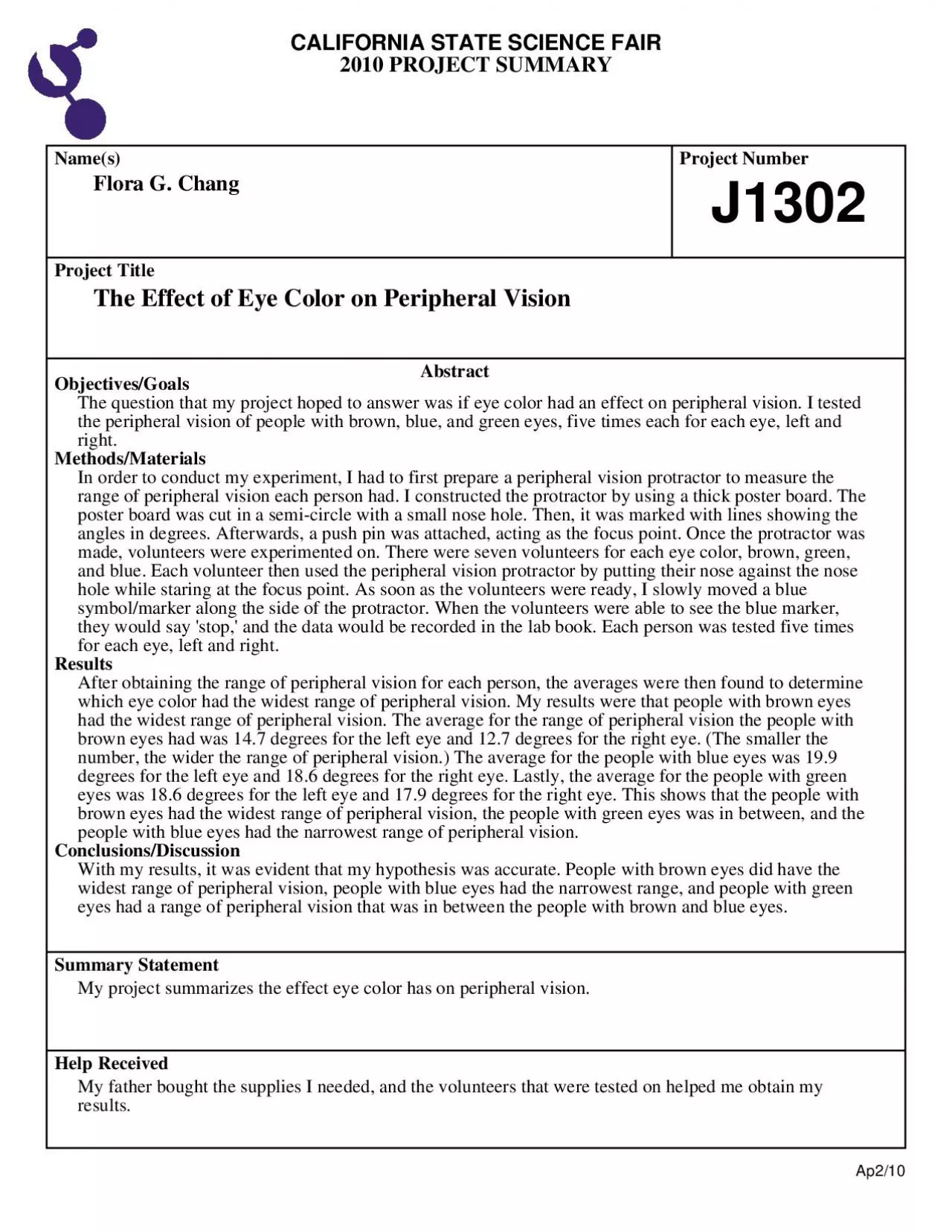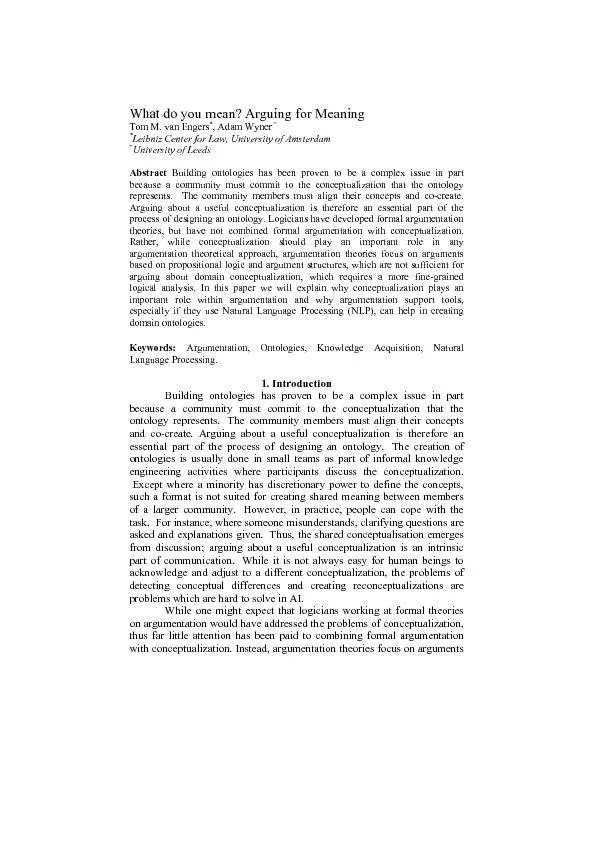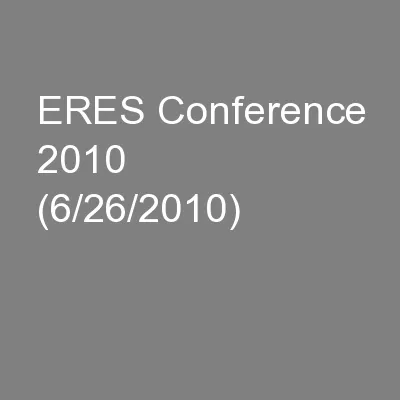PDF-2010 PROJECT SUMMARY
Author : holly | Published Date : 2022-08-24
Project NumberProject TitleAbstractSummary StatementHelp ReceivedThe question that my project hoped to answer was if eye color had an effect on peripheral vision
Presentation Embed Code
Download Presentation
Download Presentation The PPT/PDF document "2010 PROJECT SUMMARY" is the property of its rightful owner. Permission is granted to download and print the materials on this website for personal, non-commercial use only, and to display it on your personal computer provided you do not modify the materials and that you retain all copyright notices contained in the materials. By downloading content from our website, you accept the terms of this agreement.
2010 PROJECT SUMMARY: Transcript
Download Rules Of Document
"2010 PROJECT SUMMARY"The content belongs to its owner. You may download and print it for personal use, without modification, and keep all copyright notices. By downloading, you agree to these terms.
Related Documents














